Dogs are loyal, loving, and often considered man’s best friend. They can bring joy, comfort, and companionship to our lives. However, some canine behaviors can be confusing and even worrisome for their owners.
One behavior that may cause concern is when a dog stands still and stares. This seemingly odd behavior can leave dog owners wondering if something is wrong with their furry companion. We will delve into the reasons behind this behavior and explore whether or not it is a sign of a problem.
We will also discuss the potential causes of a dog standing still and staring and provide tips on addressing this behavior. Understanding why dogs exhibit this behavior is important for both the well-being of your pet and your own peace of mind. So, if you have ever wondered, “Why does my dog stand still and stare?” then read on to discover the answers.
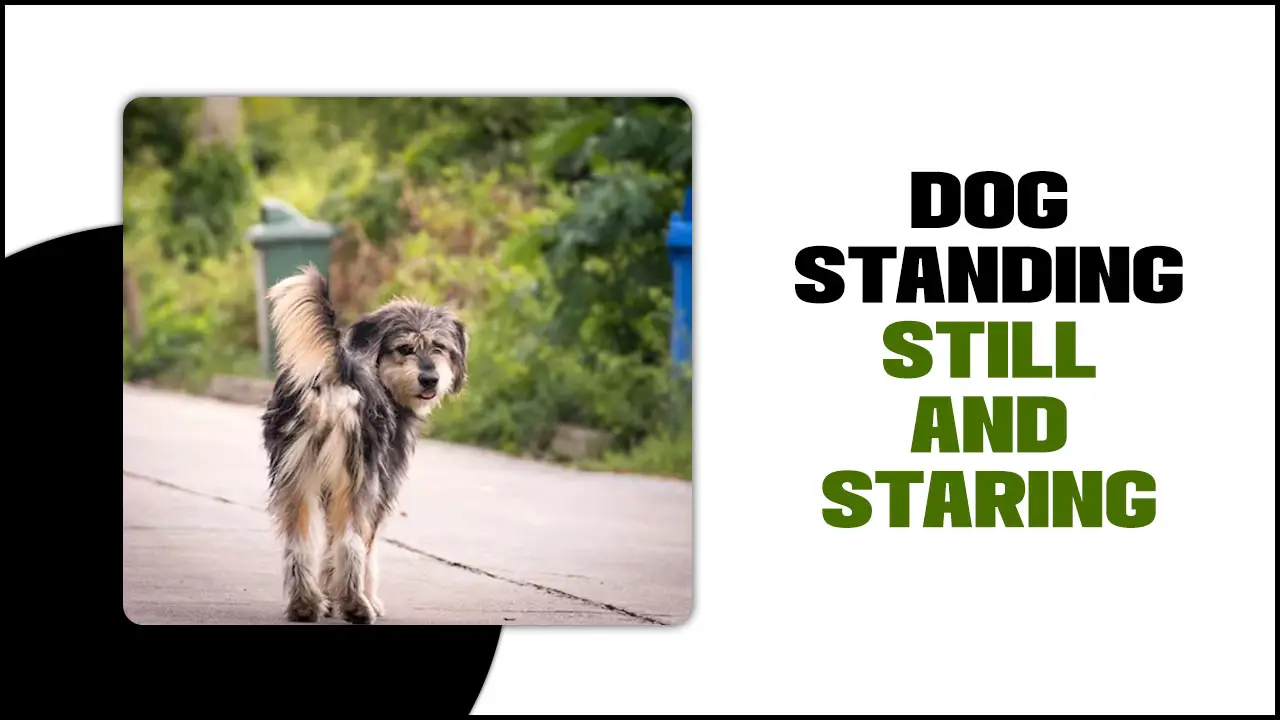
Science Of Dog Eye Contact
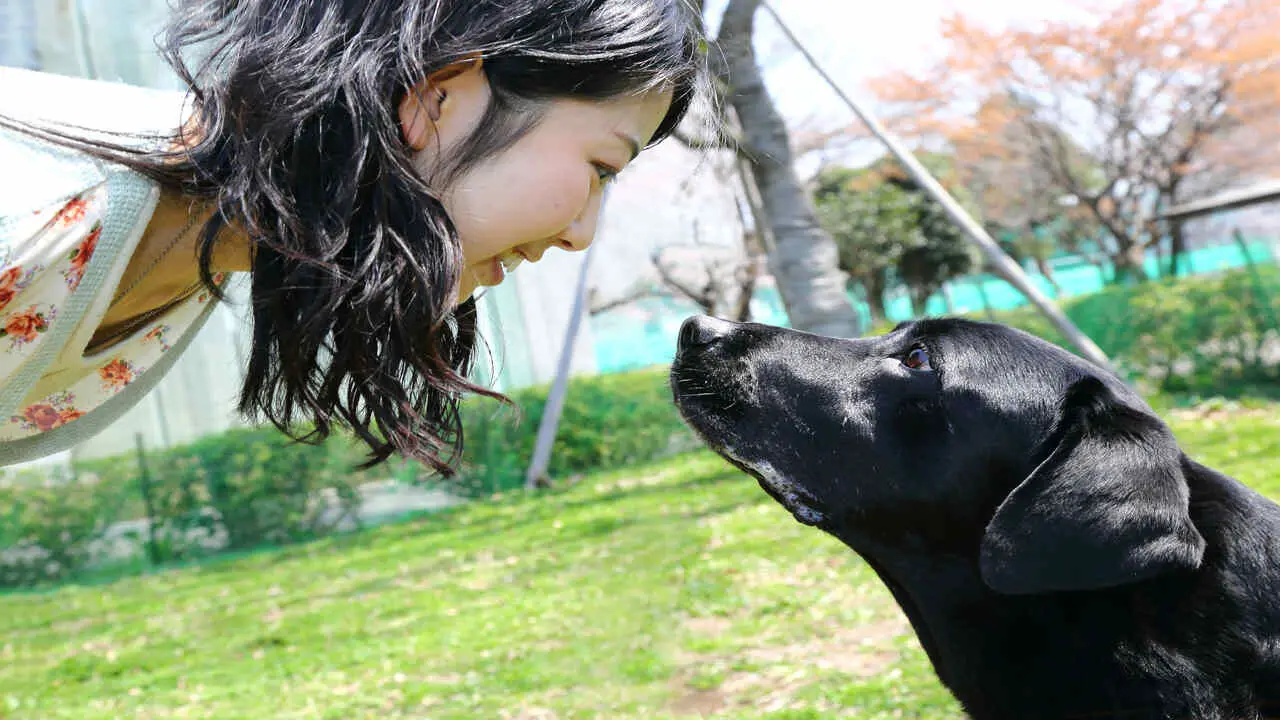
When a dog stands still and stares, it can be a fascinating display of the science behind dog eye contact. Dogs use eye contact to communicate with humans and other animals. When a dog locks eyes with you, it can be a sign of trust, love, or even a request for attention or interaction.
This behavior is rooted in their evolutionary history as pack animals, where eye contact was used to establish social hierarchy and maintain group cohesion. Additionally, studies have shown that when dogs make eye contact with humans, both parties experience an increase in oxytocin, often called the “love hormone,” which helps strengthen the bond between dogs and their human companions.
So next time your furry friend stares at you with those adorable eyes, remember that it’s more than just a cute expression – a powerful form of communication and connection.
Is There Something in the Wall?
It can be quite puzzling when your dog suddenly stands still and starts staring at a wall. You may find yourself wondering if there is something hiding in the wall that has captured their attention. While it’s natural to feel spooked by your dog’s behavior, there are usually more logical explanations for their intense focus.
Dogs have keen senses and maybe pick up on sounds or smells imperceptible to humans. They may also react to environmental changes, such as pests or unusual noises from within the wall. However, if your dog’s behavior persists or becomes concerning, it is always best to consult a veterinarian to rule out any underlying health issues.
8 Common Reasons For Dog Standing Still And Staring
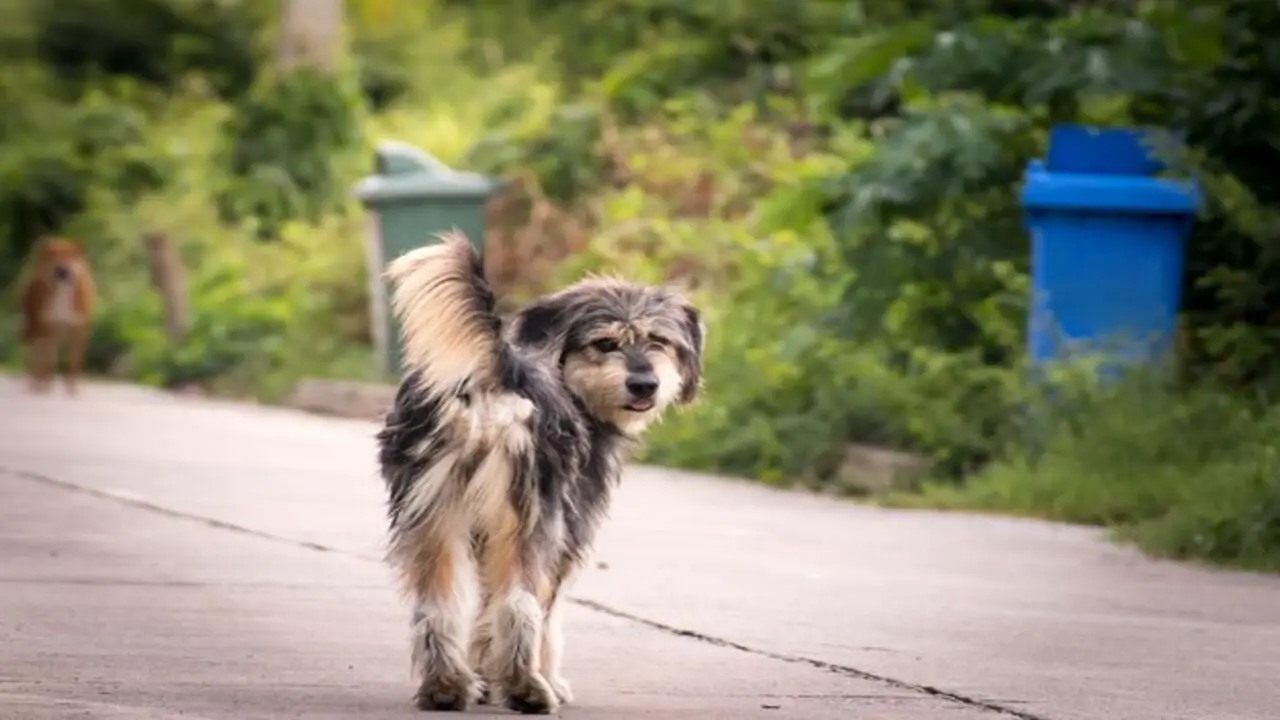
There can be several reasons why a dog may stand still and stare. Attention to their body language and context is important to determine the underlying cause. If you notice your dog standing still and staring frequently or if other concerning behaviors accompany it, it is advisable to consult with a veterinarian or professional dog trainer for further guidance. Here are eight common reasons for a dog standing still and staring:
1.Wants Attention
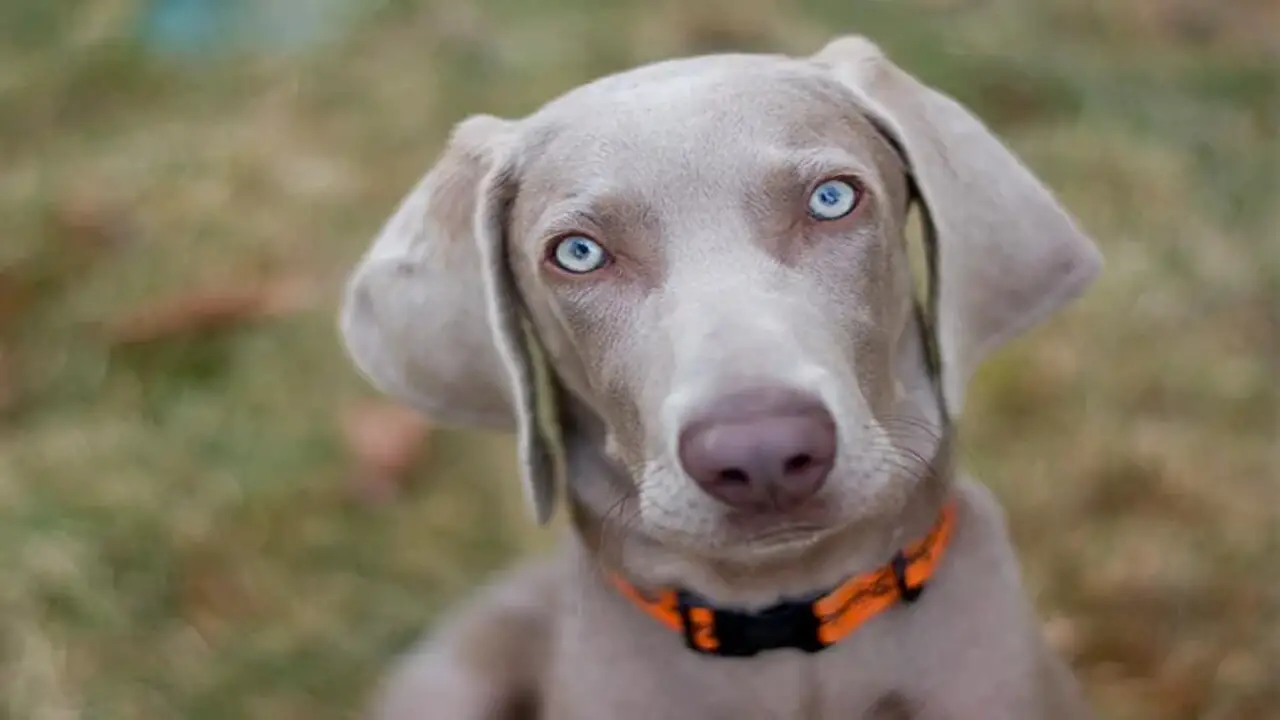
Standing still and staring at you is their way of getting your attention and engaging with you. They may seek affection, playtime, or want to be included in whatever you do.
It’s important to respond to your dog’s cues for attention, as this helps strengthen the bond between you and ensures that their social needs are met. So the next time your furry friend stands still and stares at you, take a moment to give them the attention they seek – it will make both of you happy.
2.Showing Aggressive Behavior
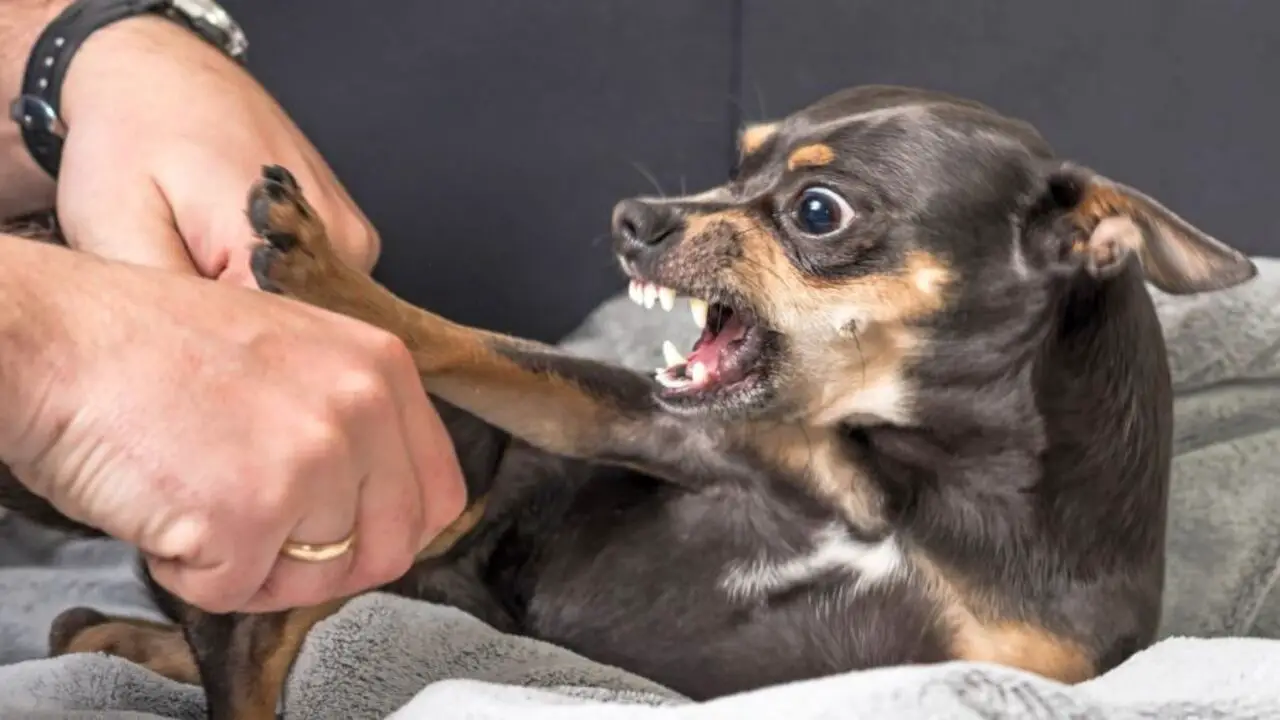
A dog standing still and staring can be a sign of aggressive behavior. This behavior is often accompanied by signs such as a tense body posture, raised hackles, and a fixed gaze. The dog may try to assert dominance or intimidate another person or animal.
It is important to approach this situation cautiously and give the dog space. Making direct eye contact or engaging with the dog is not recommended, as this can escalate the aggression. If you encounter a dog displaying this behavior, it is best to consult a professional dog trainer or behaviorist for guidance on handling the situation safely.
3.Cognitive Dysfunction
Another possible reason why a dog may stand still and stare is due to cognitive dysfunction. This is a type of canine dementia that affects older dogs. As dogs age, their cognitive function declines, and they may experience confusion, disorientation, and memory loss.
Dogs with cognitive dysfunction may stand still and stare because they are unsure of what to do next or where they are. They may also forget why they walked into a room or what they should do, causing them to stand still and stare simply. If you suspect your dog is experiencing cognitive dysfunction, it is important to consult with your veterinarian for proper diagnosis and treatment.
4.They See Something
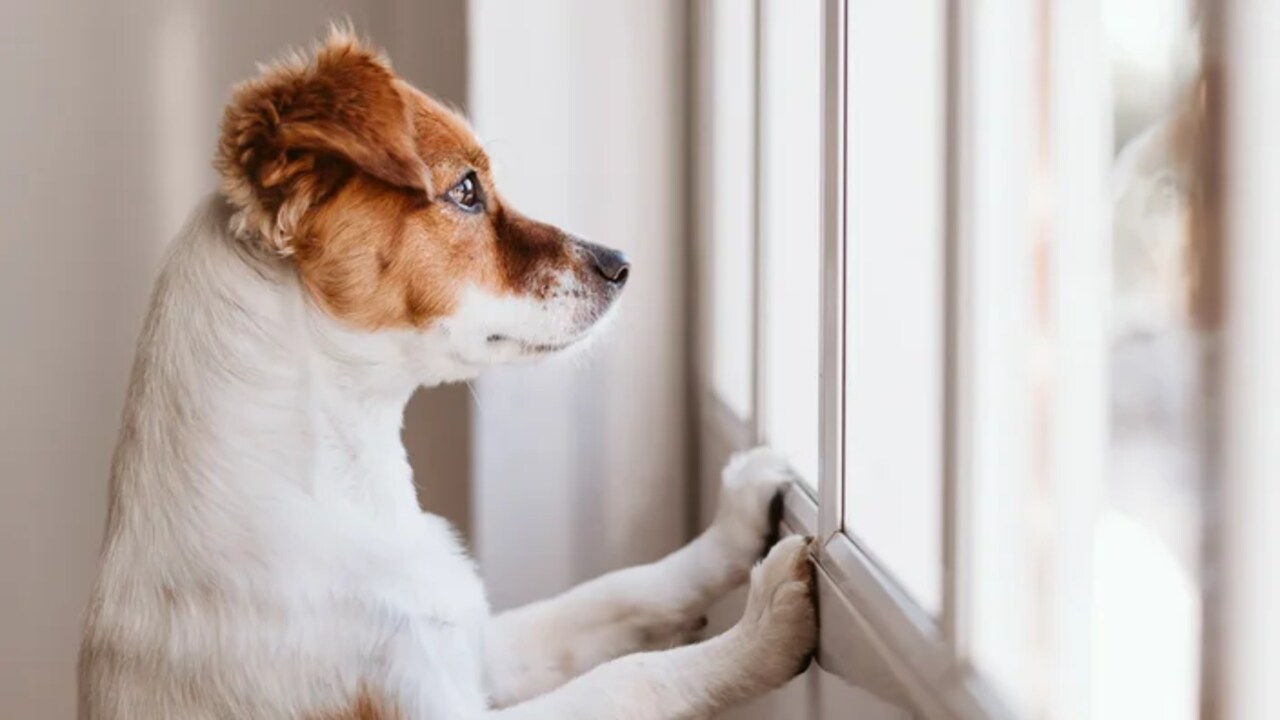
One of the most common reasons dogs may stand still and stare is because they have spotted something that has caught their attention. It could be anything from a squirrel running up a tree to someone walking by. Dogs are natural hunters, and their instincts drive them to monitor their surroundings, even when they are domesticated pets.
When dogs lock onto something, they will often stand very still and stare fixedly, assessing the situation and deciding whether or not to make a move. It is important to note that some breeds are more prone to this behavior than others, and certain situations may trigger it more frequently. Understanding why your dog is standing still and staring can help you better communicate with them and ensure their safety.
5.Seizures
Another reason a dog may stand still and stare is if they are experiencing a seizure. Focal seizures can be caused by a variety of factors, including epilepsy, brain tumors, and other neurological conditions. During a seizure, a dog may appear frozen and staring into space.
They may also exhibit other symptoms such as convulsions, foaming at the mouth, or loss of consciousness. If you suspect your dog has a seizure, it’s important to seek veterinary care immediately. Your vet can help diagnose the underlying cause and provide appropriate treatment to manage your dog’s seizures.
6.Want Something
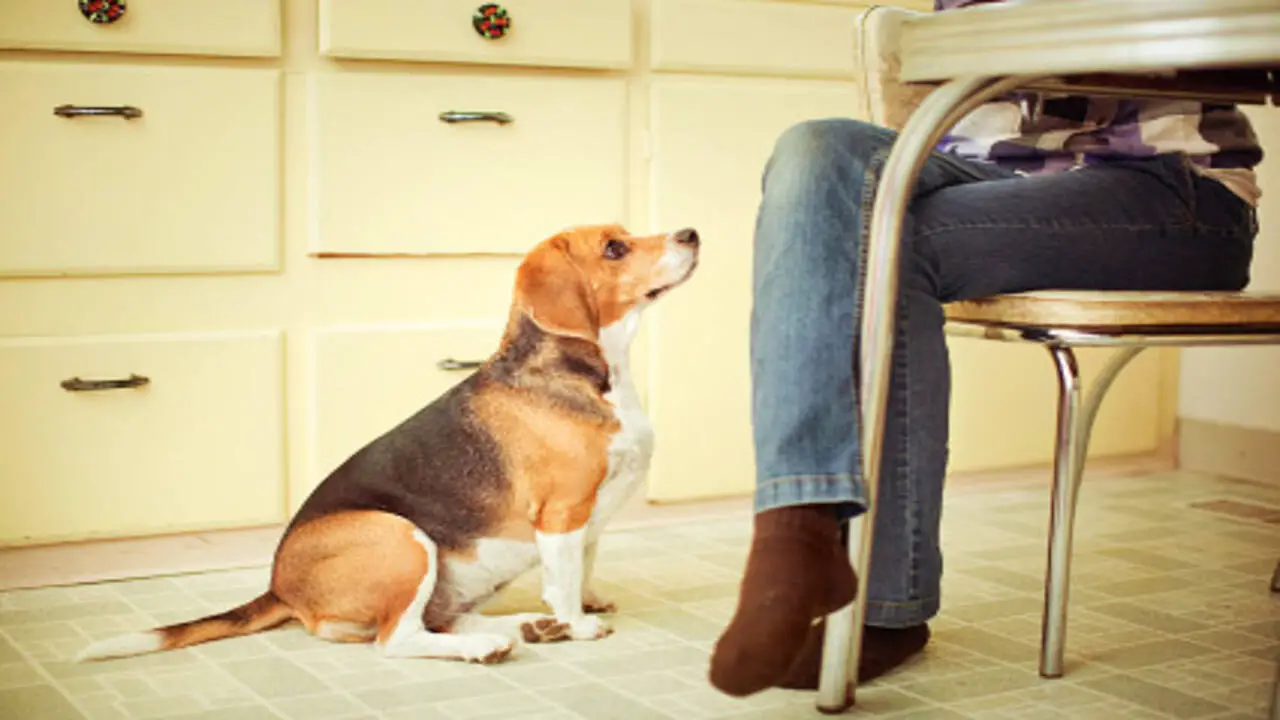
One of the most common reasons a dog may stand still and stare is that they want something. This could be anything from a treat or a toy to attention-seeking behavior and affection from their owner. Dogs are social interaction creatures that crave interaction and love engaging with their humans.
So, if you notice your dog standing still and staring at you, it could be their way of communicating that they want something from you. Pay attention to your dog’s body language and gestures to appropriately understand and fulfil their needs.
This behavior may indicate your dog is bored or restless and needs stimulation or exercise. Therefore, it is crucial to provide your furry friends with enough mental and physical activities to keep them happy and healthy.
7.Asking For Food
One of the most common reasons why a dog may stand still and stare is because they are asking for food. Dogs are known for their love of food and often use various behaviors to communicate their hunger and desire for a treat or a meal.
When a dog stands still and stares at their owner or another person, it is usually a sign that they hope to receive food or a tasty snack. This behavior is often accompanied by other signs of hunger, such as drooling, whining, or licking their lips. If you notice your dog standing still and staring at you, it may be time to check if they have been fed or require a snack or treat to satisfy them.
8.Wants Direction
Another reason a dog may stand still and stare is that it wants direction or guidance from its owner. Dogs are highly social animals and look to their owners for guidance and leadership. If a dog is unsure what to do, it may stand still and stare at its owner, hoping to receive instruction.
In such cases, the dog asks its owner to take charge and provide clear directions. As a responsible pet owner, providing your dog with clear instructions and guidance is important to feel secure and confident in its actions. This will help strengthen your bond with your furry friend and ensure a happy and healthy relationship.
What To Do If Your Dog Is Staring At A Wall
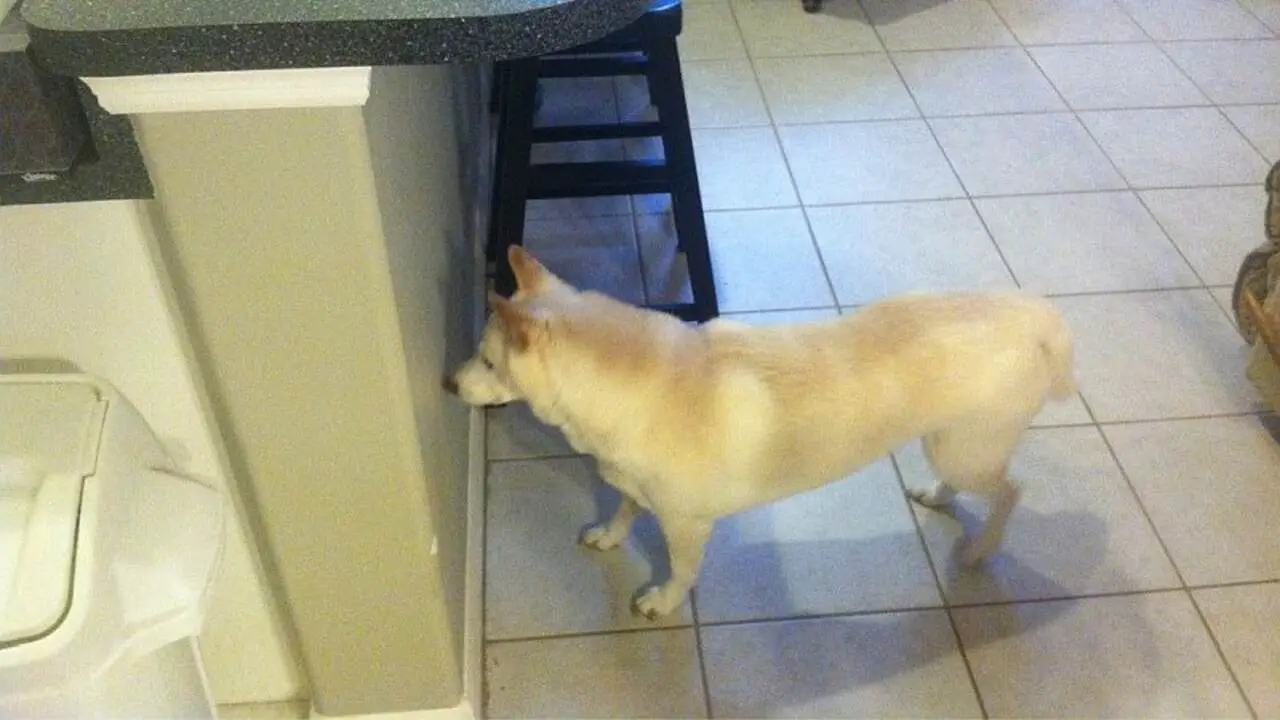
If your dog is staring at a wall, it can cause concern. While it may be harmless, it could also indicate an underlying medical or behavioral issue. The first step is to rule out any physical causes by taking your dog to the vet for a thorough examination. If no medical issues are found, it may be helpful to consult with a professional dog trainer or behaviorist who can assess the situation and provide guidance on addressing the behavior.
In some cases, environmental factors or changes in routine may be contributing to the wall-staring behavior, so making adjustments in your dog’s environment or providing mental stimulation through interactive toys and puzzles can also be beneficial. Every dog is unique, so seeking professional advice tailored to your situation is important.
How To Stop Your Dog From Staring At The Wall
It can be concerning and puzzling if your dog has started staring at the wall. There are several possible reasons why dogs exhibit this behavior, including medical issues, boredom, or anxiety. To stop your dog from staring at the wall, it is important to first rule out any potential medical causes by taking them to the vet for a check-up. If no underlying medical conditions are found, you can try the following strategies:
- Provide Mental and Physical Stimulation: Ensure your dog gets enough exercise and mental stimulation throughout the day. Engage them in interactive play sessions, provide puzzle toys, and take them for regular walks.
- Create a Comfortable Environment: Ensure your dog has a comfortable bed or designated relaxing area. Consider adding a blanket or familiar toy to make it more inviting.
- Address Anxiety or Fear: If your dog’s wall-staring behavior is due to anxiety or fear, consult with a professional trainer or behaviorist who can help you address these issues through positive reinforcement training techniques.
- Redirect Their Attention: When you notice your dog starting to stare at the wall, redirect their focus by calling their name, using a verbal cue or offering a toy or treat as a distraction.
Remember that patience and consistency are key when changing your dog’s behavior. It may take time for them to break the habit of staring at the wall, but it is possible to redirect their focus to more appropriate activities with proper care and attention.
Medical Conditions That May Cause A Dog To Stand Still And Stare

Apart from behavioral reasons, several medical conditions may cause a dog to stand still and stare. One of the most common reasons is neurological disorders that affect a dog’s ability to move and respond normally. Brain function tumours, epilepsy, and other neurological conditions may cause a dog to stare blankly at nothing in particular.
Additionally, some dogs may suffer from vision problems such as cataracts or blindness, making them stare into space. In some cases, dogs may also experience pain or discomfort from arthritis or hip dysplasia, causing them to stand still and seem distant. Therefore, if your dog is exhibiting this behavior frequently, it’s crucial to check them by a vet to rule out any underlying medical conditions.
How To Determine If Your Dog’s Behavior Is Normal Or Concerning
It’s normal for dogs to pause and take in their surroundings, but if they’re doing it excessively or unusually, it could be a sign of a problem. A few things to consider when determining if your dog’s behavior is normal or concerning. Firstly, observe their body language. If your dog seems relaxed and comfortable, their behavior is likely normal. However, if they appear tense or anxious, an underlying issue may need to be addressed.
Additionally, consider the context in which the behavior is occurring. If your dog is staring intently at another dog, it could indicate aggression or fear. On the other hand, if they’re staring at a toy or treat, it’s likely just their way of showing interest. Ultimately, trust your instincts as a pet parent.
Tips For Addressing And Managing The Behavior
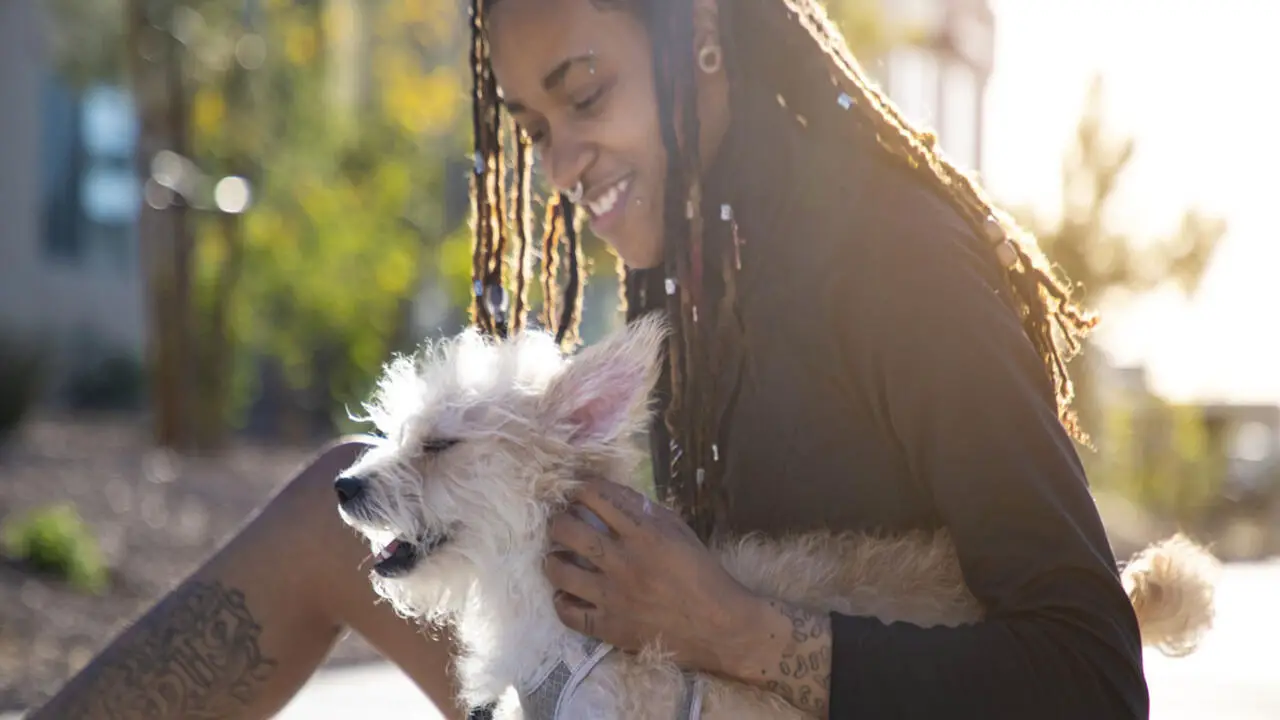
A dog’s standing still and staring can signify various behaviors and emotions. It is important to address and manage this behavior to ensure the dog’s well-being and those around them. Here are some tips for addressing and managing this behavior:
- Assess the Situation: Consider the context in which the dog stands still and stares. Are they focused on something specific? Are they displaying any signs of aggression or fear? Understanding the underlying cause can help determine the appropriate response.
- Redirect Their Attention: If the dog’s behavior is causing concern or discomfort, try redirecting their attention to something else. Use positive reinforcement techniques to encourage them to engage in a different behavior or provide a suitable distraction.
- Seek Professional Help: If the behavior persists or becomes problematic, seeking guidance from a professional dog trainer or behaviorist may be beneficial. They can assess the situation, provide tailored advice, and help implement effective management strategies.
- Consider Medical Factors: Standing still and staring sometimes indicate an underlying medical issue, such as pain or vision problems. If you suspect this may be the case, consult with a veterinarian to rule out any potential health concerns.
Every dog is unique, and their behaviors can have different meanings. It is crucial to approach any behavioral issue with patience, understanding, and a commitment to providing a safe and nurturing environment for your furry friend.
Conclusion
To sum up, a dog standing still and staring may have various reasons, ranging from assessing a situation to simply being curious. As responsible pet owners, it is crucial to understand our furry friends’ behavior and know when to intervene if necessary.
Dogs are attracted to us for a variety of reasons. Unfortunately, there isn’t one solution that answers all your questions. However, they are either interacting with us or waiting for us to speak with them most of the time.
While it may be tempting to attribute human emotions to our pets, it is important to remember that dogs have their own unique way of communicating. By paying attention to our pets’ body language and behavior, we can strengthen our bond and ensure their overall well-being.
FAQs
[rank_math_rich_snippet id=”s-dcb8c8ca-5abb-4f86-b652-ef4fbe380ea2″]